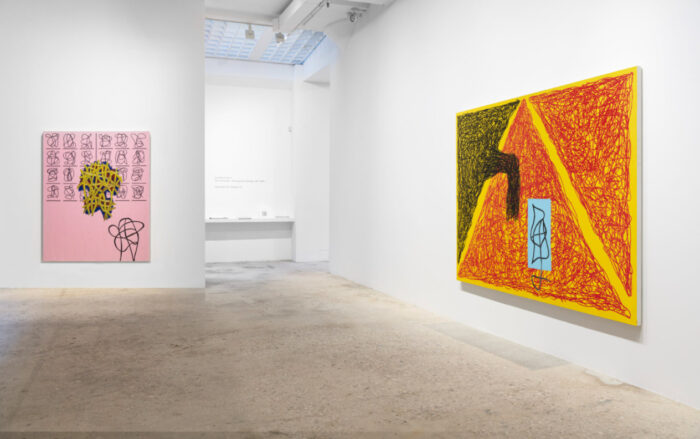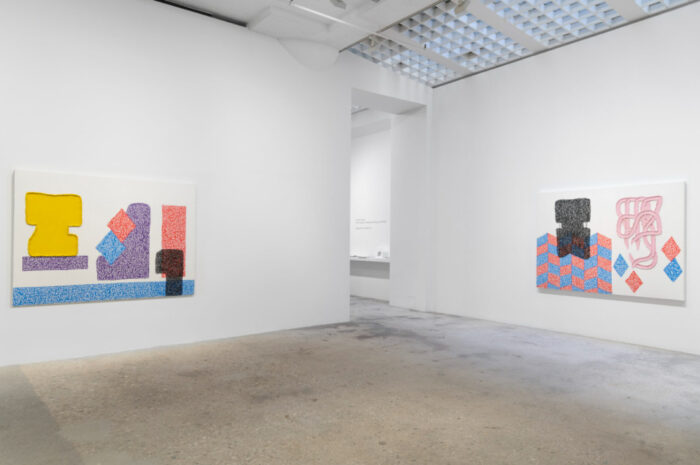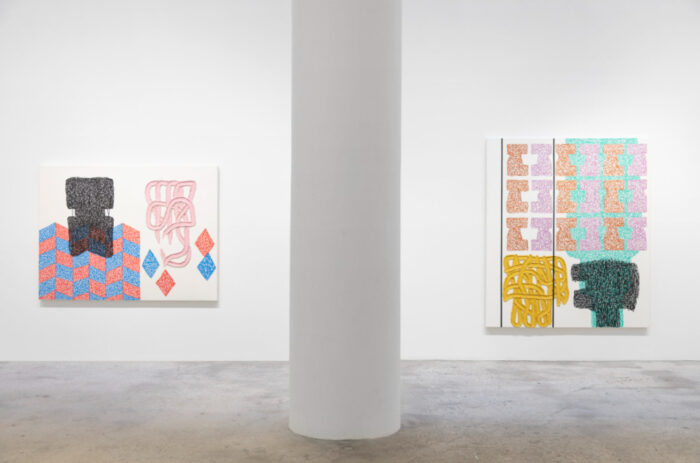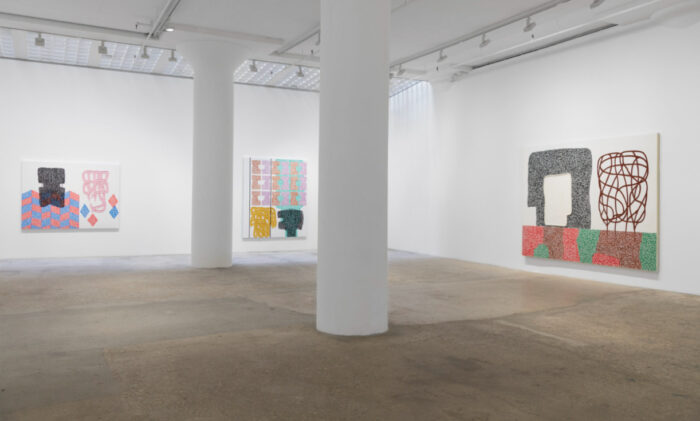







On view until October 23, 2021
All images courtesy of Jonathan Lasker and Green Naftali Gallery
Since the 1980s, Jonathan Lasker has transformed a visual language inherited from modernism into a syntax all his own, making paintings that exert both analytical rigor and an undeniably visceral appeal. Born Yesterday, his first solo exhibition with Greene Naftali, spans four decades from Lasker’s early career to the present, occasioning new interpretations of his singular brand of abstraction and its lasting impact on generations of artists.
Accompanied by a fully illustrated catalog, this focused survey presents a body of work centered on Lasker’s ingenious use of line, from flat expanses of overpainted scribbles to troweled skeins of thick impasto. In his hands, lines twist into pretzel-y knots or interweave like colored threads; they arrange themselves into quasi- architectural scaffolds or the invented letters of a hermetic script. The primacy of line in his practice points to its foundations in drawing, the first step in composing each new work: he begins with a sketch in a 4-by-6-inch notebook and then makes a small oil study on cardstock, which in turn undergoes a dramatic scaling-up to produce the (often mammoth) finished work. The act of drawing is retained most directly in his paintings’ hallmark scribbled grounds, drawn on the canvas with a grease pencil then meticulously traced in paint with a fine-gauge brush. For Lasker, lines not only have different weights and elevations and textures but different temporalities as well: the underdrawing of a scribbled matrix is done freehand and fast, while the finicky work of overpainting it is maddeningly slow. Elsewhere, the wet-on-wet gestures he inscribes into pure pigment seem to fossilize the exact moment of their making, preserving the artist’s presence through what he calls “a brushstroke that is also a thing, an object unto itself.”
Works in the exhibition draw from a finite set of pictorial units in constant recombination: Lasker’s signature lattices and whorls are rotated, mirrored, shrunk down or enlarged, recurring within individual works and across his wider oeuvre. Negative space can be marshalled to bound a form, and allover fields may advance, not recede—in a Lasker painting, nothing is passive and figure/ground positions are never fixed. Such reversals have propelled his strictly abstract means toward supple and surprising ends, creating mental landscapes that thrum with life and demand to be taken on more than formal terms. “My work deals with how forms bound and determine themselves cognitively,” Lasker has said of his cerebral approach. “I want a painting that’s operative. I’m seeking subject matter, not abstraction.” Each mark on the canvas is a discursive element in his rare blend of non-representational painting and genuine content, prompting reflection on the sheer contingency of relations between any part and a given whole.
